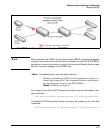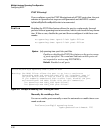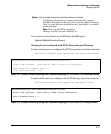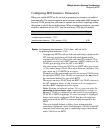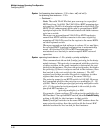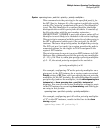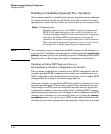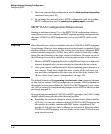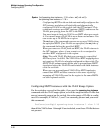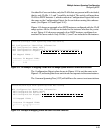
Multiple Instance Spanning-Tree Operation
Configuring MSTP
Syntax: spanning-tree < port-list > priority < priority-multiplier >
This command sets the priority for the specified port(s) for
the IST (that is, Instance 0) of the region in which the switch
resides. The “priority” component of the port’s “Port Identifier”
is set. The Port Identifier is a unique identifier that helps
distinguish this switch’s ports from all others. It consists of
the Priority value with the port number extension—
PRIORITY:PORT_NUMBER. A port with a lower value of Port
Identifier is more likely to be included in the active topology.
This priority is compared with the priorities of other ports in
the IST to determine which port is the root port for the IST
instance. The lower the priority value, the higher the priority.
The IST root port (or trunk) in a region provides the path to
connected regions for the traffic in VLANs assigned to the
region’s IST instance.
The priority range for a port in a given MST instance is 0-240.
However, this command specifies the priority as a multiplier
(0 - 15 ) of 16. That is, when you specify a priority multiplier
of 0 - 15, the actual priority assigned to the switch is:
(priority-multiplier) x 16
For example, configuring “5” as the priority multiplier on a
given port in the IST instance for a region creates an actual
Priority setting of 80. Thus, after you specify the port priority
multiplier for the IST instance, the switch displays the actual
port priority (and not the multiplier) in the show spanning-tree
instance ist or show spanning-tree < port-list > instance ist
displays. You can view the actual multiplier setting for ports
in the IST instance by executing show running and looking for
an entry in this format:
spanning-tree < port-list > priority < priority-multiplier >
For example, configuring port A2 with a priority multiplier
of “2” in the IST instance, results in this line in the show
running output:
spanning-tree A2 priority 2
4-43



